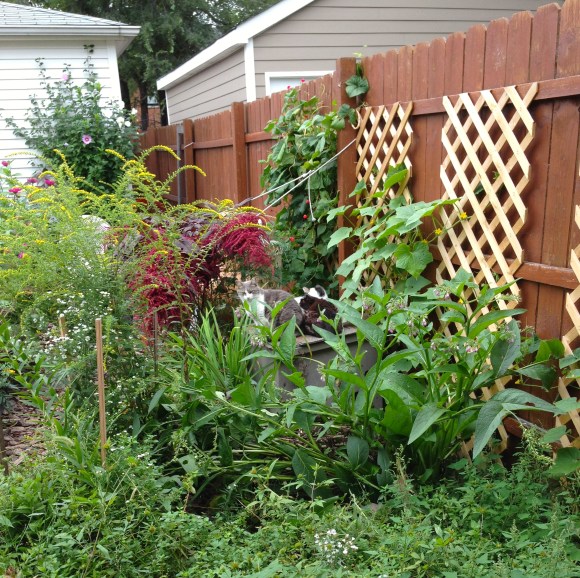Convincing Your Neighbors to Put Cat Houses in their Yards
A rescue friend who does TNR in the north suburbs is having problems convincing a a neighbor who feeds cats to put an outdoor cat house in her yard for the winter.
The feeder fed a cat family all summer, and my TNR friend did the TNR for them, and even adopted out the kittens herself.
Then my friend sent me this email, “I got the momma cat Saturday night and she was spayed Sunday. The woman that feeds her doesn’t want a dog house in her yard. Any other suggestions?”
Obviously I think the cats and their cat houses and the fact that they hang out in my yard all of the time makes my garden even more beautiful, but I understand that not everyone feels like this because they are unaware of the possibilities. A big purpose of this blog is to not only show how TNR works, but to also show how you can peacefully and beautifully live with the TNR’d cat colonies in your yard, and the relationships people have with the feral cat colonies that they feed and care for.
My first suggestion is to ask if this woman would be open to having another type of shelter in her yard. There are all kinds of outdoor cat shelters in my area to help keep the feral cat colonies warm in the winter.
The Rubbermaid bin shelter is the easiest to make, and it’s easiest to move around in a yard until you find a spot where the cats will use it. It should be placed in an area sheltered from the wind and elements, such as under your front steps.

Also, if someone objects to having it or the aesthetics of what it looks like, it will be hidden from human view. Then, in the spring, it’s easy to remove.
Otherwise, sturdier cat shelters can also be put in places not really accessible to humans, such as under a deck, or a tree, or in a gangway. The Jim Villa cat condo and Alley Cat Allies cat house are not only under our deck because it’s sheltered, but humans have to stoop to get under it. Otherwise this space would not be used for anything at all.

And when you’re in the actual garden, it’s camouflaged. Actually, if you were to paint it different colors you would hardly see it. You can get creative with it.

Really creative. In fact, you can paint a shelter any way you’d like, the cats won’t care. This shelter at another colony is one of favorites because the family who made it had their children design the outside. I call it the Kitty Graffiti House.

Shelters can also be a design element in a yard, and be completely hidden from view with plants. You can hardly see the Feral Villa in my summer garden.

Well, you can see the Feral Villa from the deck above, but it’s part of the overall design, and it’s my favorite part of the garden.
 But it’s really not that noticeable, even when the garden is bare. The colors blend in.
But it’s really not that noticeable, even when the garden is bare. The colors blend in.

You can also make a cat house out of something that was originally designed for your garden for another purpose. A few years ago we bought a chiminea and ended up using it only once because the cats decided to claim it for themselves.

If all else fails, you can go around the block and talk to your other neighbors to see if they will be open to placing a shelter in their yard. I’ve already had good luck on find people by knocking on their doors and talking to them face to face, and I’ve blogged about other people’s success stories as well. The cats will find any shelter you put out for them, especially if that neighbor can feed, and if you make the shelter more enticing for them. This can be done by sprinkling cat nip around the cat house, or placing it in areas where cats will seek refuge from the weather.
Do you have any other suggestions or stories about convincing your neighbors to allow cats to seek shelter and refuge on their property?